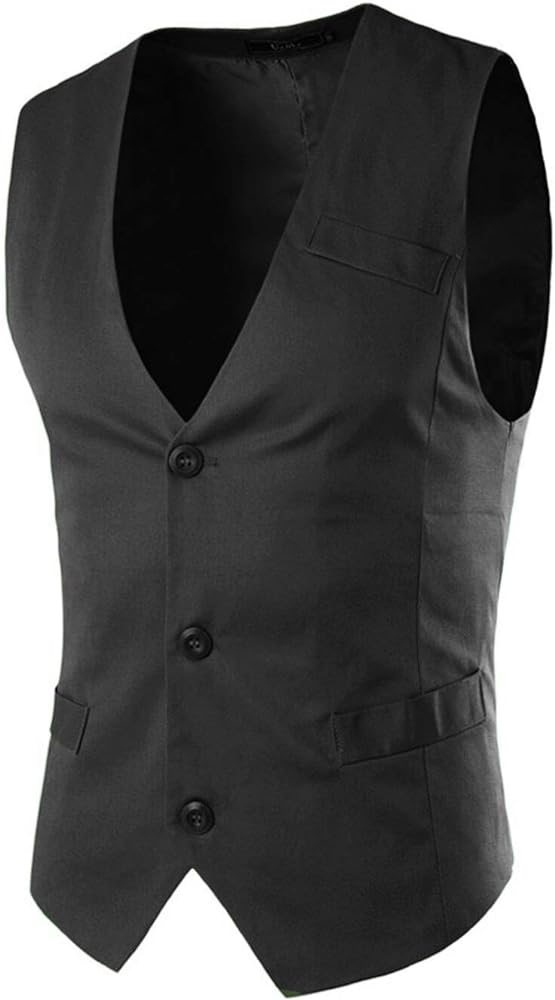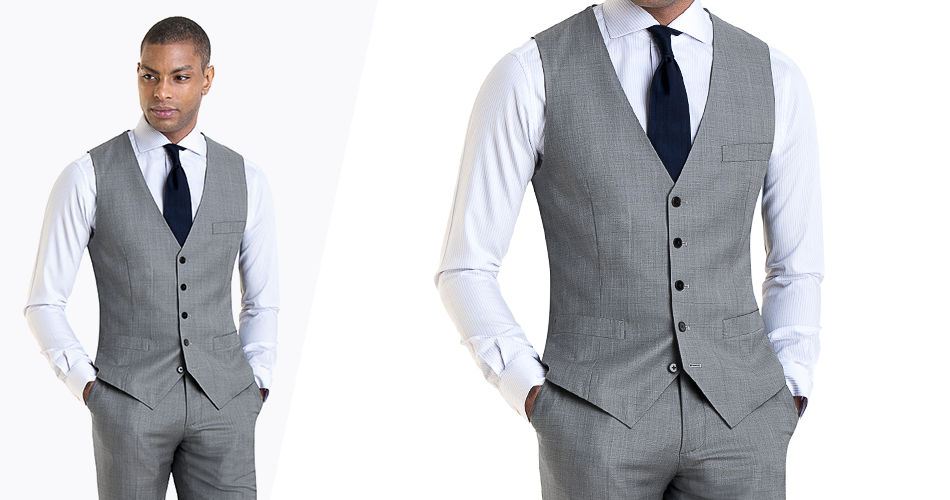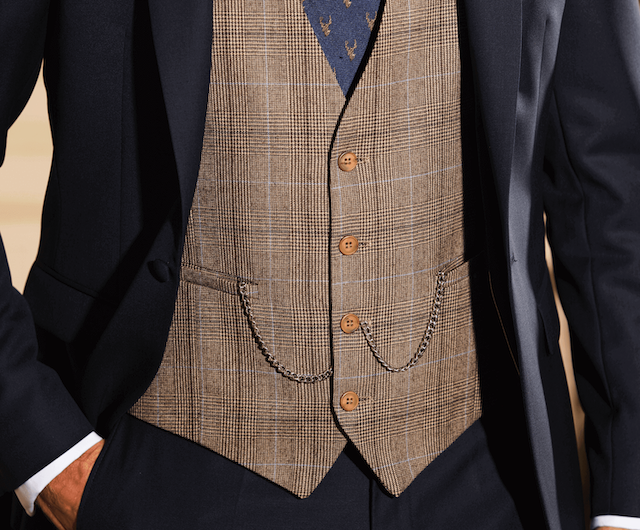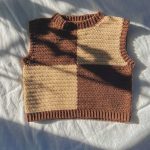The world of sartorial elegance is a realm of intricate details and unspoken rules, where every element of an ensemble contributes to the overall impression. Among these subtle nuances, the question of how many buttons to button on a vest often sparks confusion and uncertainty. Fear not, fellow fashion enthusiasts, for this comprehensive guide will unravel the mystery of vest button etiquette, empowering you to exude confidence and style with every buttoned decision.
.
Single-Breasted Vests: A Tale of Two Options
For vests adorned with a single column of buttons, the decision of buttoning strategy presents two primary options:
1. The Understated Approach: Leaving the Bottom Button Undone
This classic choice is widely considered the most versatile and universally flattering option. Leaving the bottom button undone creates a relaxed yet polished look, suitable for a variety of occasions, from casual outings to business settings. This approach ensures a comfortable fit and avoids any appearance of tightness or constriction.
2. The Formal Flair: Buttoning All the Way Up
For those seeking a more formal and structured appearance, buttoning all the buttons on a single-breasted vest can be a compelling choice. This style exudes a sense of sophistication and formality, particularly well-suited for special events or professional environments. However, it’s crucial to ensure that the vest isn’t too tight, as this can hinder movement and create an uncomfortable fit.
Double-Breasted Vests: A Buttoned Embrace
Double-breasted vests, characterized by their overlapping panels and multiple button columns, typically call for a different approach. These vests are generally designed to be buttoned all the way up, creating a streamlined and tailored silhouette. However, a touch of sprezzatura, or studied carelessness, can be introduced by leaving the bottom button undone. This adds a hint of casual elegance, particularly popular in Italian tailoring styles.
Additional Considerations for Button Bliss
As you navigate the world of vest button etiquette, consider these additional factors to refine your sartorial choices:
-
Vest Style: The formality of the vest itself should guide your buttoning decision. A more formal vest might call for all buttons fastened, while a casual style might look better with the bottom one undone.
-
Comfort: Ultimately, your comfort should be the primary consideration. If the vest feels too constricting with all buttons fastened, leave the bottom one undone for better comfort and movement.

-
Personal Preference: While these guidelines provide a framework, the choice of how many buttons to button ultimately rests with you. Experiment and see what feels most comfortable and stylish for you.
The Undone Button: A Safe Haven
When in doubt, err on the side of leaving the bottom button undone. This universally safe option ensures a polished look that avoids any potential sartorial faux pas.
Embrace the Art of Buttoning
With these insights in hand, you’re now equipped to navigate the art of vest button etiquette with confidence. Remember, fashion is a journey of self-expression and personal style. Experiment, have fun, and let your sartorial choices reflect your unique personality. After all, true style lies in embracing the details that make you feel confident and poised, buttoned or unbuttoned.
The History of Vest Buttons: A Journey Through Time
While the modern function of vest buttons focuses on aesthetics and fit, their history reveals a more utilitarian purpose. Vests, originally called waistcoats, emerged in the 16th century as an undergarment worn for warmth and to provide structure to a man’s silhouette. Early waistcoats featured a multitude of buttons, serving several purposes:
-
Security: Buttons acted as a secure closure, holding the layers of clothing together and preventing the undergarments from becoming visible.
-
Adjustability: With numerous buttons, wearers could adjust the tightness of the waistcoat for a more personalized fit. This was particularly important as clothing sizes were less standardized in those times.
-
Status Symbol: The number and quality of buttons on a waistcoat could signify a man’s social standing. Wealthier individuals often adorned their waistcoats with more elaborate and expensive buttons, showcasing their social status.
As fashion evolved, the number of buttons on vests gradually decreased. By the 19th century, vests became more streamlined, with the focus shifting towards appearance and style. The utilitarian aspects of buttons diminished, paving the way for the modern concept of vest button etiquette.
Button Styles and Materials: Adding a Touch of Personality
While the number of buttons plays a crucial role in vest etiquette, the buttons themselves can also add a touch of personality and style. Here are some factors to consider when choosing buttons for your vest:
-
Material: Buttons come in a wide variety of materials, including metal, plastic, wood, and even horn. Metal buttons, particularly those made of brass or silver, offer a classic and timeless look. Plastic buttons are typically more affordable and come in a wider range of colors and styles. Wood or horn buttons can add a touch of rustic charm to a vest.
-
Style: The button style should complement the overall design of the vest. Classic vests often pair well with shank buttons, which feature a narrow post that attaches them to the garment. For a more modern look, consider flat buttons or toggle buttons.
-
Size: The size of the buttons should be proportionate to the size of the vest. Smaller buttons are suitable for more delicate vests, while larger buttons can add a touch of boldness to a more robust garment.
By carefully selecting the button style and material, you can elevate your vest beyond mere functionality and transform it into a statement piece that reflects your personal style.
Vest Button Care: Maintaining a Polished Look
Maintaining the buttons on your vest is just as important as choosing the right ones. Here are some tips for keeping your vest buttons looking their best:
-
Cleaning: Use a soft, damp cloth to wipe down the buttons regularly. Avoid using harsh chemicals or abrasive cleaners, as these can damage the buttons’ finish.
-
Loose Threads: If a button thread becomes loose, repair it immediately. A loose thread can easily snag or unravel, potentially leading to a lost button.
-
Replacement: If a button becomes damaged or chipped, replace it promptly. Mismatched buttons can detract from the overall appearance of your vest.
-
Storage: When storing your vest, ensure the buttons aren’t under any pressure or strain. This can prevent them from becoming misshapen or damaged.
By following these simple care tips, you can ensure that your vest buttons continue to function flawlessly and contribute to a polished and well-maintained appearance.
With this comprehensive guide in hand, you’re now well-equipped to navigate the world of vest button etiquette with confidence. From understanding the historical context to choosing the perfect buttons and maintaining their condition, you can craft a look that is both stylish and historically informed. So go forth, experiment with buttoning strategies, and embrace the art of expressing your unique style through the details of your vest.





